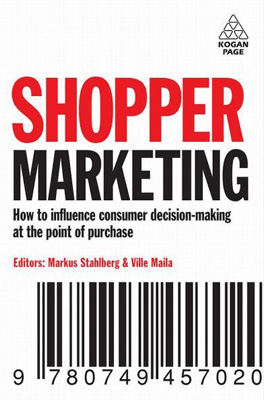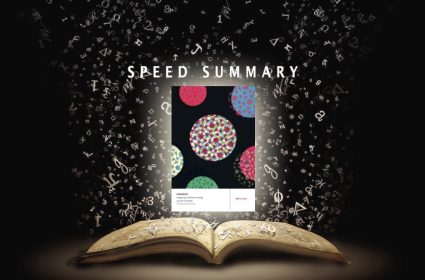Shopper Marketing Speed Summary: How to Increase Purchase Decisions at the Point of Sale

 Shopper Marketing: How to Increase Purchase Decisions at the Point of Sale
Shopper Marketing: How to Increase Purchase Decisions at the Point of Sale- Authors: Markus Stahlberg and Ville Maila
- Publisher: Kogan Page
- Publication: 2010
Shopper Marketing is a round up of cutting edge insight into this new hot area of marketing, defined as brand marketing for the retail (and e-tail) environment. With 68% of all purchases unplanned, 70% of brand choices made in store, and only 5% of shoppers loyal to a particular brand within any particular category, brands and retailers need to understand people as active shoppers, rather than passive consumers.
Through 34 brain-snack sized chapters by leading experts, Shopper Marketing provides a useful primer for brands and retailers alike on how shopper-centric marketing can increase purchase decisions at the point of sale.
The overarching takeaway – successful brands should be designed as much as shopper solutions as they are consumer solutions: For example, brand design should be executed with the 3S’s in mind – the shelf, the store and the shopper – as opposed to the traditional focus on bringing to life the brand essence/pyramid/onion.
Key insights:
- PAPA Matters: Whilst most decisions are made at the point of purchase – shoppers arrive at the point of purchase with PAPA – purposes, assumptions, preferences and attitudes. Optimizing purchase decisions at the point of purchase with shopper insights means understanding PAPA.
- Shopping is a Journey: The process of shopping can be best understood as a journey of seven stages into which shopper insights can be assigned
- The Awakening (awakening the consumer to the possibility of a journey)
- The Call (when a consumer becomes a shopper with a purchasing purpose)
- The Crossing (choosing and entering the store)
- The Path (searching for the solution)
- The Reckoning (evaluating between options)
- The Prize (choosing the right option)
- The Homecoming (returning home with the prize)
- Tail to Retail Better: Brands, retailers (and e-tailers) should “tail” shoppers in the retail, to identify pain points in the shopping experience, and share insights and solutions with partners
- From 10,000 to 20: A good shopper insight should help explain how shoppers get from the 10,000 products on display competing with each other in the average supermarket store, to the 20 or so get found, chosen and purchased.
- Branding the Store: Stores need to become brands – offering unique loyalty-generating retail experience. Brand manufacturers should not only align themselves with retailers to further this goal, but actively share their expertise in brands to help retailers through this branding transformation
- Sensual Shopping: Shoppers are increasingly “tuning out” of traditional in-store marketing – brands need to reinvigorate their marketing by creating emotional arousal of the full five senses; sight, sound, smell, touch and taste.
- It’s all in the Packaging: As retailers increasingly ban in-store marketing materials, packaging is the main way brands can do effective shopper marketing, and optimize purchase decisions as point of purchase by following these six design guidelines
- Visibility. Use contrast, large blocks of colour, and white space.
- Design for shop-ability. Make recognition and selection easy with consistent use of colours, sizes and shapes
- Differentiation. Distinguish yourself from the competition with packaging that has emotional appeal – as the right choice
- Simplicity: On pack design should communicate a single clear message/claim, additional claims dilute the message
- Utility: Drive consumption with pack variants (on fridge packs, on the go packs)
- Sustainability: Appeal to environmental concerns
- Shopping the Cause: Build shopper loyalty with cause marketing using these seven guidelines
- Find an issue your core customer cares about
- Be in for the long term and integrate (fully into your communications plan)
- Identify the actionable [and measurable] insight that will motivate shoppers
- Engage the local community – national programs with local relevance
- Avoid compassion fatigue by being transparent and engaging shoppers on a personal level
- Measure, measure measure results – and promote them internally and to shoppers – all stakeholders need to see progress, and marketers need to see what is working
- Allow your program to evolve – be nimble, and agile – test, learn, adjust




